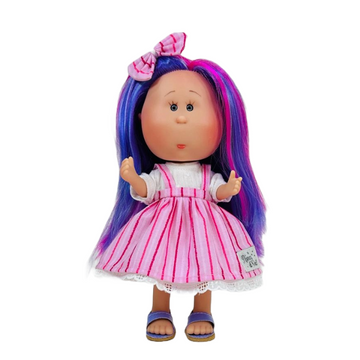A Biased View of Dolls And Accessories
A Biased View of Dolls And Accessories
Blog Article
Rumored Buzz on Dolls And Accessories
Table of ContentsThe 5-Minute Rule for Dolls And AccessoriesExcitement About Dolls And AccessoriesThe Of Dolls And AccessoriesRumored Buzz on Dolls And AccessoriesSome Ideas on Dolls And Accessories You Should KnowDolls And Accessories Fundamentals ExplainedSome Of Dolls And Accessories
When dolls are included in team play, kids practice waiting, sharing, and paying attention to others' ideas. Whether they're making believe to be a parent, brother or sister, or close friend, kids learn just how connections workhow to support others, solve disagreements, and look after somebody else. These early role-play experiences become the groundwork for healthy friendships and partnerships later in life.Duplicating comforting routines with a doll (feeding, rocking, putting to bed) can assist kids really feel tranquil and safe and secure. These comforting routines instruct them how to self-regulate. Dealing with a doll can make a kid really feel qualified and positive - baby dolls. It offers them a sense of obligation and control in a world that usually really feels unforeseeable.
Not known Factual Statements About Dolls And Accessories
When children see dolls that show their race, heritage, and culture, it enhances a positive feeling of identification. Dolls likewise introduce children to societies outside their very own, building considerate curiosity and empathy for others.
As Dr. Karyn Purvis, a leader in youngster development and trauma-informed treatment, once stated: This powerful quote highlights exactly how play isn't just funit's exactly how kids learn best. The brain wires itself with repetition. When a youngster is engaged, happy, and psychologically attached to an activitylike doll playthe mind enhances those links quicker and a lot more meaningfully.
The 6-Second Trick For Dolls And Accessories

Boys require compassion, kindness, and creative imagination tooand doll play provides that. Dolls are typically a child's very first "friend," assisting them practice partnerships, construct interaction abilities, and feel comforted.
About Dolls And Accessories
Through dolls that matter. Samantha Ong Samantha Ong is the owner of Joeydolls, a Canadian-based toy brand name on an objective to celebrate Eastern cultures with happy, inclusive play. Motivated by her very own experiences growing up without social depiction, Samantha makes dolls that aid children feel honored of who they are while stimulating curiosity and empathy in others.
Playing with dolls motivates kids to chat more regarding others' ideas and emotions, a research has actually located. The study suggests that playing fictional video games with dolls can help youngsters create social abilities, theory of mind and empathy.
A Biased View of Dolls And Accessories
They were additionally a lot more likely to attend to the dolls in the second individual, talking with them directly, whereas the characters on the computer system display they had a tendency to refer to in the third person. No distinction was observed in between young boys and ladies."Interior state language can indicate that a youngster is assuming regarding other people's thoughts and feelings while having fun with dolls," stated Gerson.
And that they see language use in this regard is great confirmation of the hypothesis."Mardell added that the searchings for ought to apply to any kind of role-play plaything, instead than being certain to Barbies."Kid typically begin to show indicators of internal state language around the age of 4.
The Single Strategy To Use For Dolls And Accessories
"It ends up being essential for making and maintaining friendships, that site and how they discover from their educators, and moms and dads."The research study likewise found that the kids had raised mind task in the posterior premium temporal sulcus (pSTS) area when they spoke as though their dolls had thoughts and sensations. The pSTS region is believed to be included in the growth of social and psychological processing abilities.
Childhood years is not a static life phase; without a doubt, the interpretation, significance and understanding of childhood years are all based on alteration. By the nineteenth century one of the most profound adjustments was the significance put on permitting children to experience "the carefree pleasures" of youth with playtime tasks. Play was currently taken into consideration to be an important element of a great childhood.
In order to fully comprehend the significance of play, one have to likewise recognize the value of the doll. However, dolls are a lot more than playthings created to entertain young women. Throughout the nineteenth century correct playtime tasks were picked to promote intellectual, physical or emotional growth. Dolls were especially prominent due to the fact that they were believed to promote and support feminine top qualities such as compassion, caring and empathy.
The smart Trick of Dolls And Accessories That Nobody is Talking About

It is only via archaeological investigations that researchers can wish to reveal and document the complete array of play experiences. Chronicling these experiences, and particularly the role of dolls, is essential for providing an extra total photo of childhood throughout the 19th century. Alarcn, Sara E - baby dolls., "Kid's Play: The Duty of Dolls in 19th Century Childhood" (2007 )
Report this page